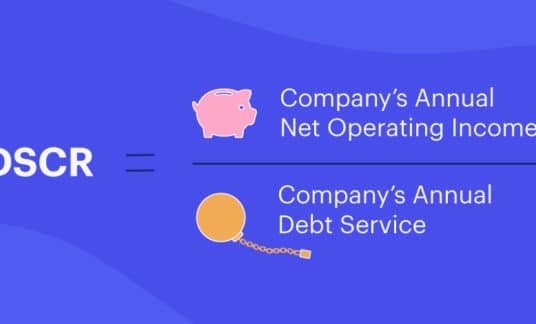Amalgamation refers to the process of 2 or more companies becoming 1 entirely new entity. This is a different type of business combination than mergers and acquisitions, though there are some similarities.
If you’re in a position where you have to deal with business acquisitions and associated financial issues, it’s important to understand the differences. Here’s a closer look at what business amalgamation is, how the process works, how it impacts business capital and when it makes sense to amalgamate.
What Is Amalgamation?
Amalgamation, often referred to as consolidation in an accounting context, is a type of business combination where companies join to form a new legal entity.
Informally, 3 different types of combinations may loosely be referred to as amalgamations. It’s helpful to distinguish between amalgamations proper and similar types of business combinations, known as mergers and acquisitions:
Amalgamation (No Survivors)
In amalgamations, properly speaking, all of the companies involved in the transaction become part of an entirely new company.
The companies transferring their assets into the new entity are called the transferors, while the new company receiving the assets is called the transferee. As a result of this transfer, original companies cease to exist, leaving no survivors predating the formation of the new company.
One of the most famous amalgamations of all time was the 1999 combination of the Exxon and Mobil oil companies into one new company, ExxonMobil.
Merger (1 Survivor)
In a merger, the purchasing company buys all assets of the company being purchased. In this case, the company being purchased ceases to exist, and only the purchasing company survives.
For example, when Charter Communications acquired Time Warner Cable in 2016, Charter paid $78.7 billion for Time Warner Cable’s assets, and Time Warner Cable ceased to exist.
Acquisition (2 or More Survivors)
In an acquisition, a company, known as the parent company, purchases 50% percent or more shares of interest in 1 or more smaller companies, known as subsidiary companies. In this case, the parent company assumes ownership of the subsidiary company, and all companies survive the transaction.
An example of an acquisition is Disney’s acquirement of Marvel Entertainment in 2009, which left Marvel intact as a subsidiary of Disney.
Why Make the Distinction
It is useful to keep these conceptual distinctions in mind when talking about business combination deals so that you’re clear on exactly what type of transaction is involved, how many surviving companies there are and other related details, such as how managerial control and assets are being transferred.
It’s also important to realize that these terms are sometimes used loosely or interchangeably in informal conversation or writing, so you can’t always assume the person you’re talking to or the document you’re reading is using a term in a consistent way.
When you’re not sure exactly what type of combination is being referenced, be sure to seek clarification by asking questions or rereading carefully.

Different Types of Amalgamation
Business amalgamation usually begins with an analysis by investment bankers and lawyers to determine what combination would be most financially advantageous for the companies involved.
After a proposal for amalgamation is made, it must be approved by the board of directors of each company involved, along with any applicable regulatory bodies.
Once approval is given, there are 2 different types of amalgamation. The procedure of amalgamation affects business capital differently depending on which method is used.
Amalgamation in the Nature of Merger
In amalgamation resembling a merger, all shareholder interests, assets and liabilities of the transferor companies are pooled together and transferred to the transferee company.
Additionally, the transferor’s profit and loss gets combined with that of the transferee or transferred to the general reserve if applicable. Reserves are adjusted to reflect differences between amounts recorded as share capital issued, along with consideration of cash or other assets on one side and share capital of the transferor company on the other.
Shareholders of the transferor entities holding at least 90% face value of equity shares become shareholders in the new company. No adjustments to book values are made in this process.
Amalgamation in the Nature of Acquisition
In amalgamation resembling an acquisition, shareholders of the transferor company do not gain a proportionate shareholding interest in the equity of the new company.
The transferee company may incorporate the assets and liabilities of the transferor companies by their existing carrying amounts, or by allocating evaluation to individual assets and liabilities of the transferors based on their fair values at the time of amalgamation.
Reserves from the transferor companies, other than statutory reserves, are not counted in the transferee’s financial statements.
Purchase consideration that exceeds net asset value is recorded as goodwill, while that which falls short is credited to capital reserve. Non-cash elements can be considered at fair value.
After each type of amalgamation, shares of the newly formed company are distributed to shareholders of the transferor company. The transferor company is then liquidated, and the transferee company takes over the transferor’s assets and liabilities.
Understanding the Importance of Amalgamation: When It Makes Strategic Sense
There are several advantages of amalgamation, particularly if you’re interested in:
- Eliminating competitors
- Acquiring cash assets
- Promoting growth
- Increasing shareholder value
- Lowering financing needs
- Saving on taxes
- Reducing risk through diversification
- Streamlining management for operational efficiency
- Entering new markets
- Expanding research and production capability
Amalgamation also has disadvantages::
- Combining liabilities of companies may increase debt
- Brand identity marketing benefits may be lost
- Eliminating competitors may promote monopoly, artificially inflating pricing and reducing selection for consumers, thereby increasing dissatisfaction
- Combining workforces may force layoffs
An informed decision about amalgamation should be made in consultation with your accounting and legal teams before starting the process for your business.











